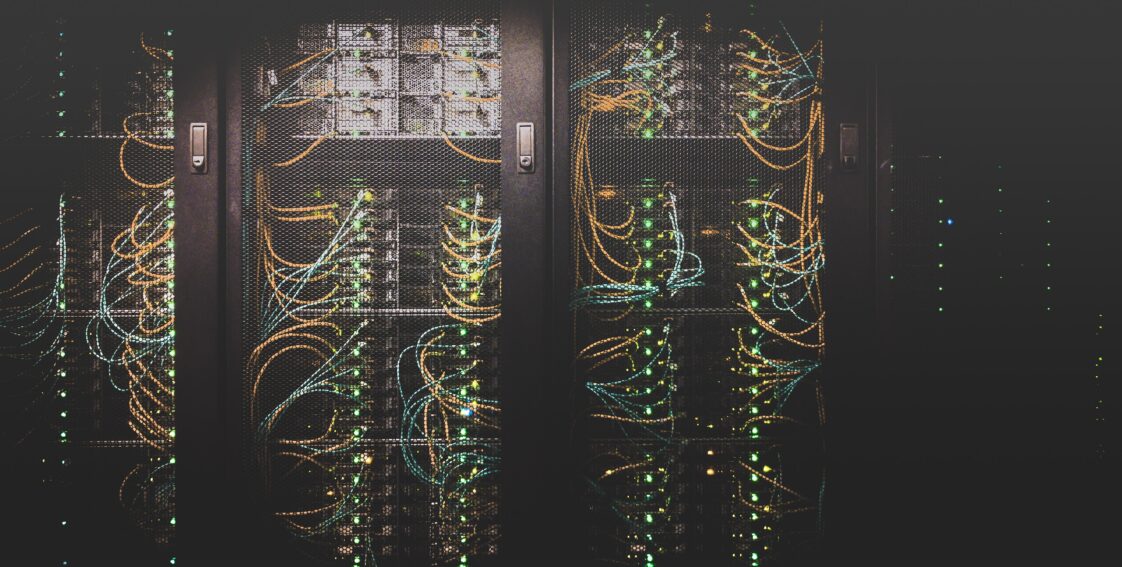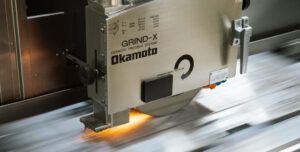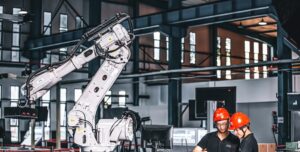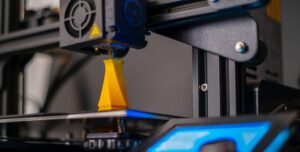EXPLORING THE TOP ADVANCEMENTS SHAPING THE FUTURE OF MANUFACTURING TODAY
Manufacturing is a rapidly evolving field that involves the use of technology to automate specific tasks and processes within a business. As businesses continue to seek ways to optimize their operations and increase their efficiency, technology in Manufacturing is becoming an increasingly important tool. In this blog post, we will take a look at some of the coolest Manufacturing trends to watch in 2023 and beyond.
What is Industry 4.0 and why is it relevant to my company?
Industry 4.0 is a term used to describe the fourth industrial revolution, which is focused on the integration of digital technologies into the manufacturing industry. It encompasses a range of technologies such as the Internet of Things (IoT), artificial intelligence (AI), robotics, cloud computing, and big data analytics. The goal of Industry 4.0 is to create a more interconnected and automated manufacturing environment that improves efficiency, productivity, and profitability.
In manufacturing, Industry 4.0 involves the use of advanced digital technologies to optimize the entire production process, from design and development to production and logistics. By integrating these technologies, manufacturers can achieve real-time visibility into their operations, improve decision-making, and optimize processes for greater efficiency and quality.
Artificial intelligence (AI)

Artificial intelligence (AI) is already playing a significant role in Manufacturing, and this trend is only set to continue. AI-powered custom automation solutions can help businesses automate complex tasks that would otherwise require human intervention. For example, AI can be used to automate quality control processes, detect anomalies in data sets, and optimize supply chain logistics.
Here are some examples of how AI is being used in manufacturing:
- Predictive maintenance: AI algorithms can analyze sensor data to detect anomalies and predict when equipment failures are likely to occur. This enables maintenance teams to take proactive measures to prevent equipment downtime and reduce maintenance costs.
- Quality control: AI can be used to analyze images and other data to identify defects and anomalies in products. This can help manufacturers to improve quality control and reduce the number of defective products.
- Production optimization: AI algorithms can be used to optimize production processes, such as scheduling, resource allocation, and inventory management. This can help to improve efficiency, reduce costs, and increase throughput.
- Supply chain management: AI can be used to optimize supply chain management by analyzing data on supplier performance, logistics, and demand forecasting. This can help manufacturers to reduce costs, improve delivery times, and improve customer satisfaction.
Robotics
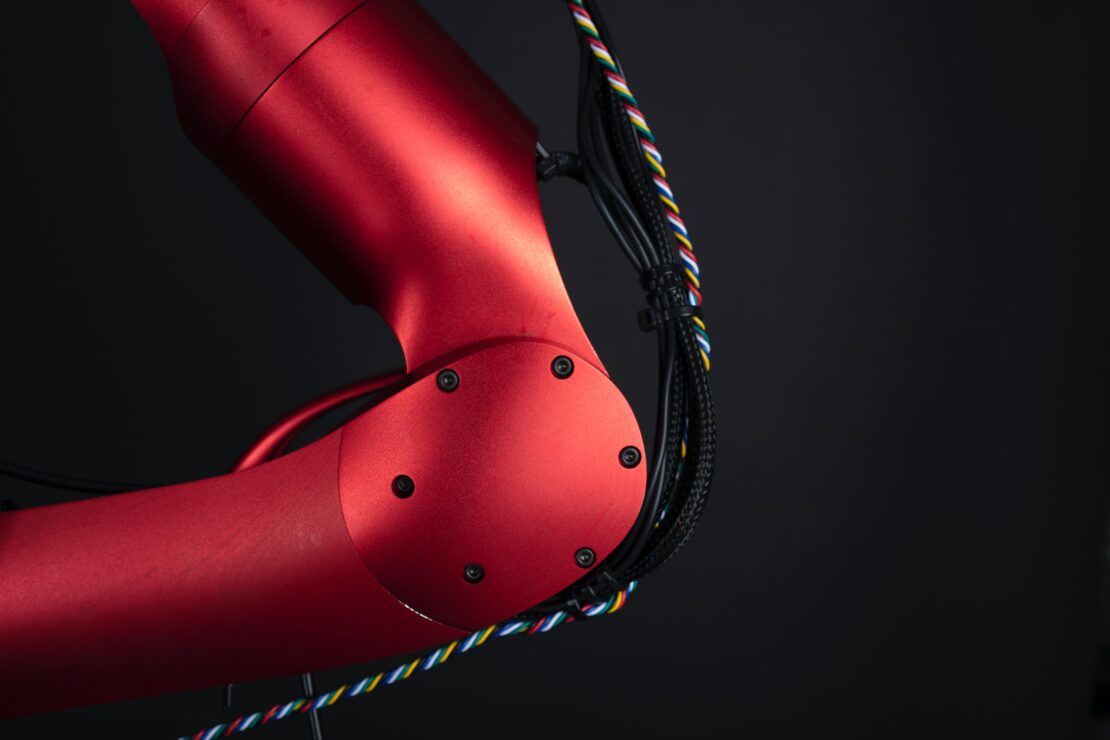
Robotics is another trend that is shaping the Manufacturing industry. With advancements in robotics technology, businesses can automate a wide range of tasks, from assembly line processes to customer service. Robotic technology is becoming more sophisticated and accessible, making it possible for businesses of all sizes to benefit from automation solutions.
Here are some trends for robotics in manufacturing that are expected to continue in 2023:
- Collaborative robots: Collaborative robots, also known as cobots, are becoming increasingly popular in manufacturing. These robots are designed to work alongside human workers, and they can be programmed to perform a wide range of tasks. In 2023, we can expect to see more collaborative robots being used in manufacturing, especially in areas such as assembly and material handling.
- Autonomous mobile robots: Autonomous mobile robots (AMRs) are robots that can move around the factory floor without the need for human intervention. These robots can be used for tasks such as material handling, inventory management, and equipment maintenance. In 2023, we can expect to see more AMRs being deployed in manufacturing, especially in large factories with complex logistics.
- Artificial intelligence: Artificial intelligence (AI) is being integrated into robotics to improve their functionality and efficiency. In 2023, we can expect to see more robots with AI capabilities, such as predictive maintenance and adaptive control.
- 3D printing: 3D printing technology is being used to create custom parts and components for robots. In 2023, we can expect to see more 3D printing being used in manufacturing, especially for small-batch production and prototyping.
- Cloud connectivity: Cloud connectivity is being used to enable robots to communicate with each other and with other systems in the factory. In 2023, we can expect to see more robots being connected to the cloud, which will allow for real-time monitoring and optimization of manufacturing processes.
Internet of Things (IoT)
In manufacturing, the Internet of Things (IoT) refers to the use of connected devices and sensors to improve the efficiency and productivity of manufacturing processes. IoT technology can be used to monitor and control various aspects of the manufacturing process, including the production line, equipment, and inventory.
IoT sensors can be used to collect data on machine performance, such as temperature, pressure, and vibration, which can be used to predict and prevent equipment failures. This data can also be used to optimize production processes, such as adjusting the speed of the production line or changing the mix of raw materials used in the manufacturing process.
Additionally, IoT technology can be used to improve supply chain management by tracking the movement of goods and materials throughout the manufacturing process. This can help to identify potential bottlenecks and inefficiencies in the supply chain, which can be addressed to improve overall efficiency and reduce costs.
The Internet of Things (IoT) is a trend that is transforming many industries, and custom automation is no exception. With IoT-enabled devices and sensors, businesses can automate tasks and processes in real-time, making it possible to respond quickly to changes in the environment.
Cloud Computing

Cloud computing is a trend that is transforming many industries, and custom automation is no exception. Cloud-based custom automation solutions can provide businesses with greater flexibility, scalability, and cost savings. With cloud-based solutions, businesses can access custom automation solutions from anywhere, at any time, and scale their operations up or down as needed.
Cloud computing in manufacturing refers to the use of remote servers hosted on the internet to store, manage, and process data related to manufacturing processes. This allows manufacturers to access computing resources, such as storage and processing power, without having to maintain their own on-premise IT infrastructure.
Cloud computing in manufacturing can be used for a variety of purposes, including:
- Data storage: Cloud storage can be used to store large amounts of data related to manufacturing processes, such as sensor data, production logs, and maintenance records.
- Analytics: Cloud computing can be used to analyze manufacturing data, using techniques such as machine learning and predictive analytics, to identify patterns and optimize processes.
- Collaboration: Cloud-based collaboration tools can be used to enable teams in different locations to work together on manufacturing projects, sharing data and collaborating in real-time.
- Supply chain management: Cloud-based supply chain management systems can be used to track the movement of goods and materials throughout the manufacturing process, from raw materials to finished products.
- Maintenance: Cloud-based maintenance systems can be used to monitor equipment performance and schedule preventive maintenance activities, reducing downtime and improving efficiency.

Since the outbreak of Covid in 2020 there has been a huge increase in the number of employees that no longer want to work in an office setting. Cloud computing and working from home can bring several benefits to manufacturing companies, including:
- Increased efficiency: Cloud computing can enable manufacturing companies to streamline their operations and automate several processes. This can lead to increased efficiency and productivity, as employees can access data and systems from anywhere, anytime.
- Improved collaboration: Cloud-based tools and platforms can enable manufacturing teams to collaborate and communicate more effectively. Working from home can also facilitate remote collaboration, as employees can connect and work together without being in the same physical location.
- Cost savings: By leveraging cloud computing and working from home, manufacturing companies can reduce their overhead costs associated with maintaining physical infrastructure and facilities. This can result in significant cost savings, especially for smaller companies or those with limited resources.
- Flexibility and scalability: Cloud computing can offer manufacturing companies the flexibility and scalability to adapt to changing business needs and demands. Working from home can also provide flexibility for employees, allowing them to work around their personal schedules and needs.
- Improved data security: Cloud computing providers typically have robust security measures in place to protect data and systems. This can provide a higher level of security than traditional on-premise IT infrastructure. Working from home can also improve data security by reducing the risk of physical security breaches and enabling companies to implement remote access policies and protocols.
Additive Manufacturing
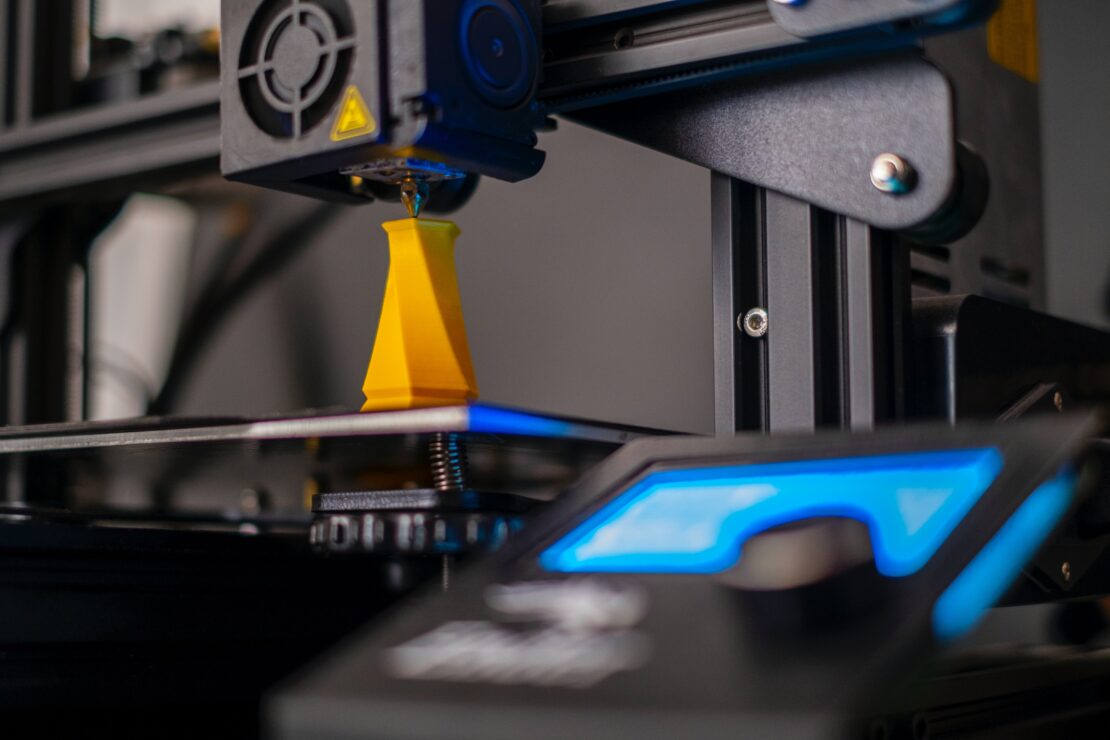
3D printing, also known as additive manufacturing, is an emerging technology that is becoming increasingly popular in the manufacturing industry. 3D printing allows manufacturers to create complex parts and prototypes using a layer-by-layer approach, where successive layers of material are added on top of each other until the final product is created.
The use of 3D printing in the manufacturing automation process offers several advantages, including:
- Customization: 3D printing allows manufacturers to create customized parts and components, which can be tailored to the specific needs of individual customers.
- Cost-effectiveness: 3D printing can be more cost-effective than traditional manufacturing processes, especially for small production runs or for creating complex parts.
- Faster time-to-market: 3D printing can reduce the time-to-market for new products, as it eliminates the need for expensive tooling and allows for rapid prototyping and testing.
- Reduced waste: 3D printing can reduce waste by using only the exact amount of material needed to create the final product, which can lead to cost savings and environmental benefits.
- Improved design: 3D printing allows manufacturers to create more complex and intricate designs, which may not be possible with traditional manufacturing methods.
Big Data Analytics
Manufacturing companies are leveraging big data analytics to improve their processes in several ways, including:
- Quality Control: Manufacturing companies use big data analytics to monitor product quality and identify defects in real-time. By analyzing production data, they can identify the root causes of defects and take corrective action to prevent similar issues in the future.
- Predictive Maintenance: Big data analytics can help manufacturing companies predict when equipment failure is likely to occur. By analyzing equipment data, companies can identify patterns that indicate potential issues and schedule maintenance before equipment breaks down.
- Supply Chain Optimization: Big data analytics can help manufacturing companies optimize their supply chain by analyzing data from suppliers, distributors, and other partners. This allows companies to identify inefficiencies in the supply chain and make changes to improve overall performance.
- Inventory Management: By analyzing data from sales, production, and supply chain, manufacturing companies can optimize inventory levels to meet customer demand while minimizing costs.
- Process Optimization: Big data analytics can help manufacturing companies optimize their processes by identifying bottlenecks and inefficiencies in production. By analyzing data from sensors and other sources, companies can identify areas where improvements can be made and take corrective action to improve efficiency.
By analyzing vast amounts of data, companies can identify patterns, trends, and insights that allow them to make better decisions and improve their operations.
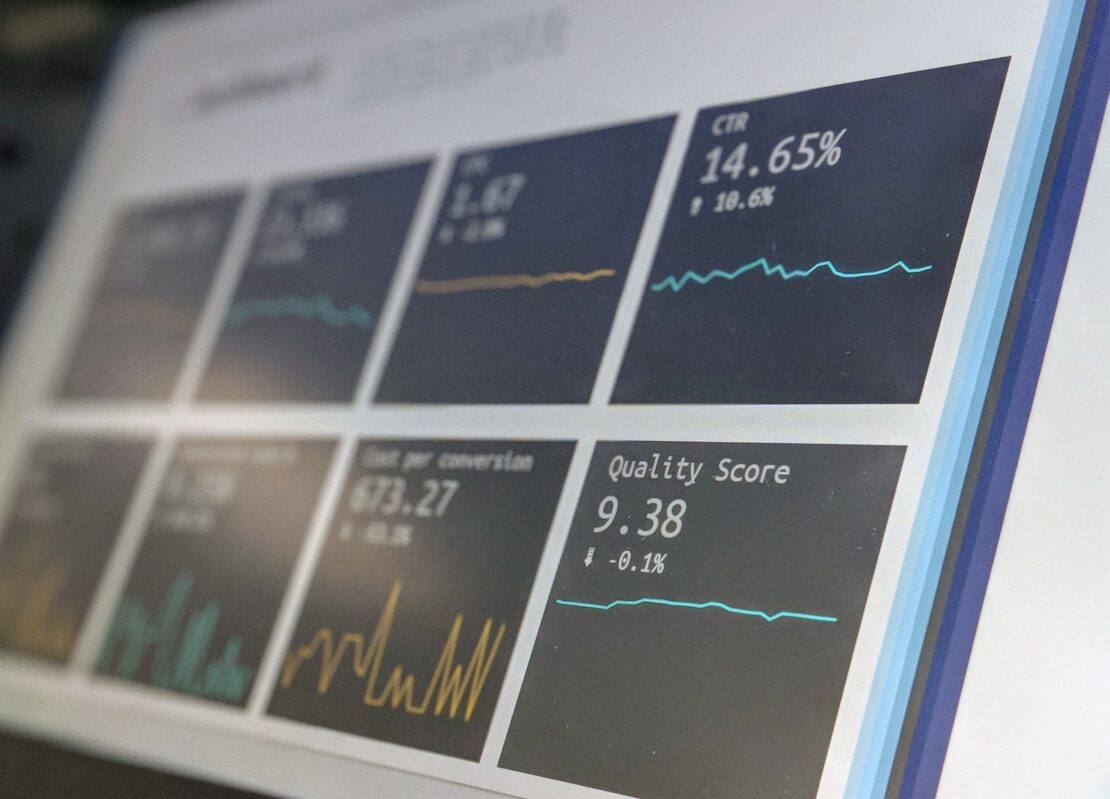
Manufacturing technology is a rapidly evolving field transforming how businesses operate. As businesses seek to optimize their operations and increase their efficiency, custom automation solutions are becoming increasingly important. Trends like artificial intelligence, robotics, IoT, cloud computing, and human-machine collaboration are all shaping the Manufacturing industry, and businesses that stay ahead of these trends will be well-positioned to succeed in the years ahead.
